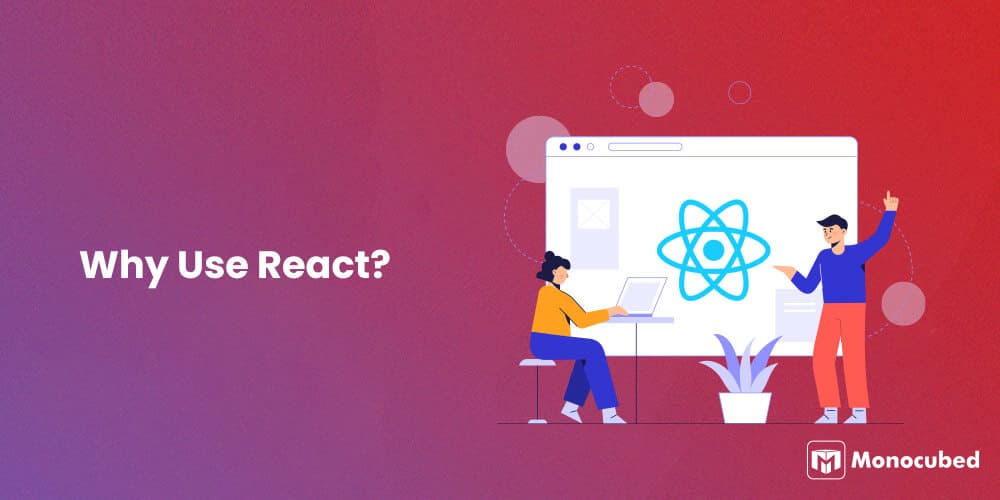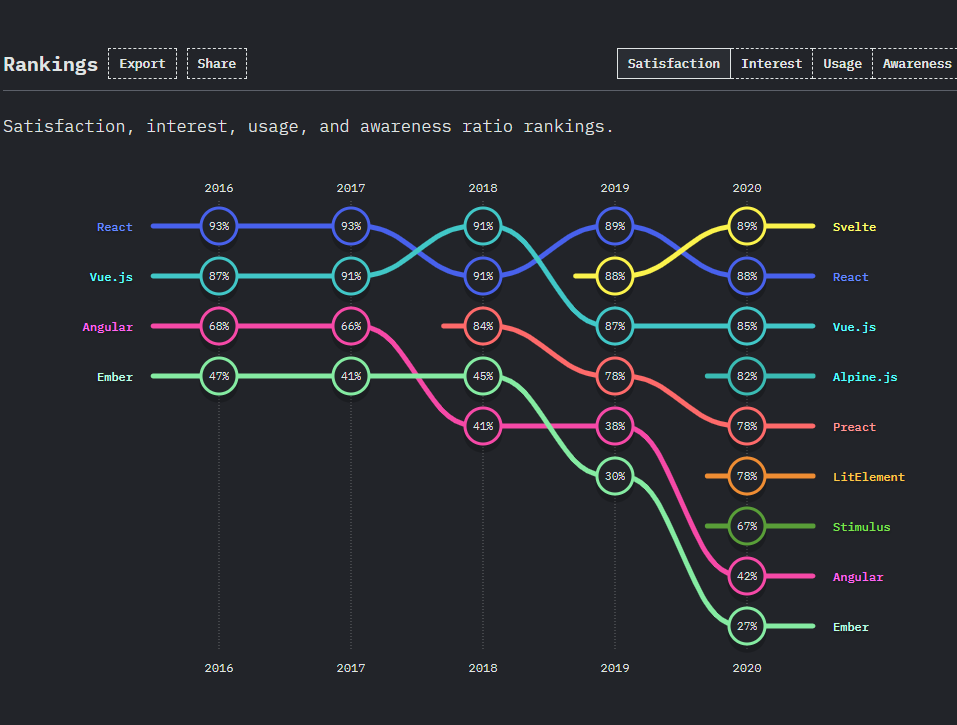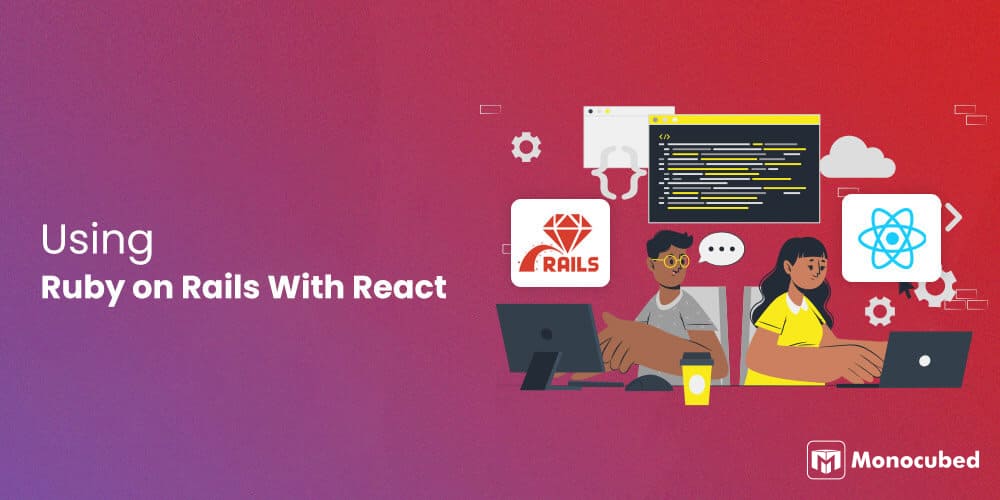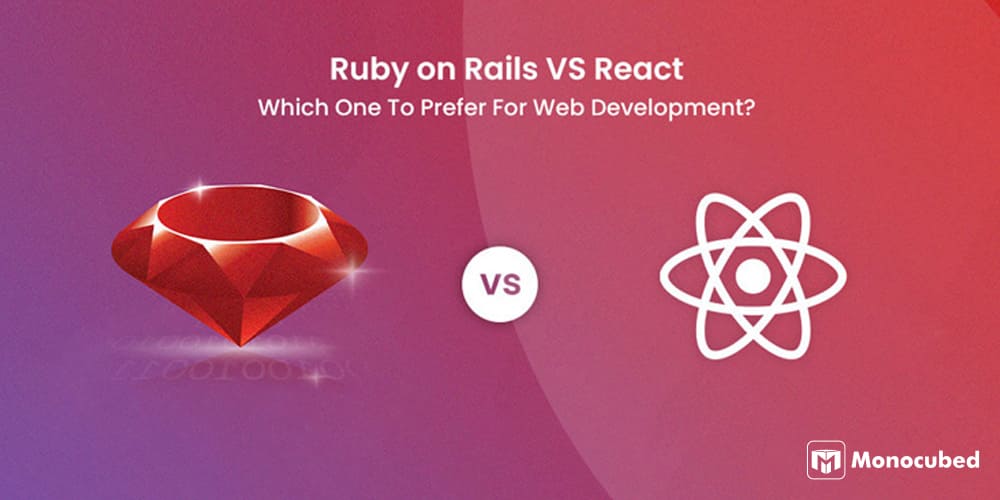Today, web applications are vital for businesses to succeed. Companies are always looking for the perfect web framework that can build versatile mobile and web apps. Although frameworks are a considerable asset, finding the ideal fit is a source of many long meetings and debates.
We bring to you a detailed comparison of two of the most popular frameworks today – Ruby on Rails and ReactJS. With a Ruby on Rails VS React battle, this blog will help you decide which is the better option for your web app. But first, let’s have a brief introduction to both the technologies.
Table of Content
Why Use Ruby on Rails?

Ruby on Rails is an open-source server-side web framework based on the Ruby language. Commonly called RoR or Rails, the framework is highly productive and enables rapid website development. Object-oriented in its approach, Rails is used for developing the server-side code of websites and web applications.
Developed by David Heinemeier Hansson, RoR was built to simplify working with Ruby. Working on the MVC design architecture provides clean segmentation of application and presentation code. Following a ‘Don’t Repeat Yourself’ philosophy, Rails offers reusable components, Ruby Gems, an inbuilt ORM system, and CoffeeScript for implementing Ajax operations. Ruby on Rails is used for rapid prototyping and creating MVPs(Minimum Value Products).
Some features of RoR are:
- DRF – The ‘Don’t Repeat Yourself’ approach means all the data values are stored in a single place for unambiguity, consistency, and maintainability.
- Convention Over Configuration – Conventions are followed by default unless explicitly stated. You don’t need to write lengthy configuration codes.
- MVC Architecture – The MVC architecture divides the web application code into layers that are easy to test and maintain.
- Testing – It supports automated testing and also employs many debugging practices. You can extend the automatic tests RoR creates for your code without requiring an external testing framework.
- Gems are software package modules, including libraries, command-line utilities, and Ruby code for repetitive tasks. On RubyGems, you can get access to a wide array of packages and modules.
- Active Record – Using the powerful ORM system ActiveRecord, you can automatically create database tables using the objects and classes in your code.
- Metaprogramming – Rails has the dynamic-typing feature that allows you to write methods and classes even at runtime.
Have a Web App Idea?
Confused where to start? Don’t know how much it will cost? Wondering if it will be successful? We’ve got you covered. Let’s talk.
Why Use React?

ReactJS or React is an open-source JavaScript library of UI components. With React, you can easily create interactive user interfaces. Developed by Facebook and a group of distinct companies and developers. React can be utilized for mobile applications or single-page application development.
It provides a set of React libraries that can be reused or customized to suit your company’s needs. High performance, flexibility, scalability, and speed are some of the main reasons for using React. Some additional features of ReactJS are –
- Components – Components are JavaScript functions that take in arbitrary inputs called props and return UI elements that describe what is displayed on the webpage.
- JSX – A template language that extends JavaScript code to implement HTML syntax. It also allows React to show more useful error and warning messages.
- Virtual DOM – A virtual copy of the data object model(DOM) that updates only the necessary nodes and modules.
- React Hooks – React introduced Hooks in Version 16.0.8. Hooks allow you to reuse stateful logic without affecting the hierarchy or inheritance rules of components.
- Unit Testing – You can render component trees in a simplified test environment and analyze the output of each component.
- End-to-end Testing – You can also execute the whole application in a realistic browser environment to test the visual layer and verify the user experience.

Ruby on Rails Vs React – The Major Differences
| Ruby on Rails | React | |
|---|---|---|
| Language | Based on the interpreted, high-level, object-oriented programming language Ruby. | Built upon the interpreted, multi-paradigm scripting language JavaScript. |
| Architecture | It follows the Model-View-Controller or MVC architecture. | It does not explicitly implement any design pattern. It can be used for building the View layer in MVC. |
| Usage | It is a full-stack framework for the frontend and backend development of websites and web applications. | It is a frontend library for the development of interactive User Interfaces(UI) of web pages. |
| Size | A monolithic general-purpose framework that can develop a whole web application. | Lightweight, minimalistic, specifically for designing the presentation layer. |
| Flexibility | It is very opinionated. There is only the “Rails way” of doing things, and exceptions are hard to make. | Highly flexible, it allows developers to implement their architecture. |
| Performance | High performance for small-scale apps, although it has high memory usage. | Scalable, large-scale applications that have great speed and loading time. |
| Mobile Development | Not suitable for mobile app development. | React Native application tool available for mobile app development. |
| Community Support | A community of more than 5800 contributors and more than 900 K users. It has acquired 48.2K stars on GitHub. | Used by more than 1.6 million people, it has a steadily growing community. Currently, there are 1500 contributors and has 167K stars on GitHub. |
How To Choose Between Rails and ReactJS?
It is essential to choose the technology in your website stack carefully. Now that we know the difference between the two frameworks, we can look at all the projects that should prefer using Ruby on Rails or React.
As an experienced Ruby on Rails software development company, we recommend Ruby on Rails for your project if it fulfills some of the criteria mentioned below –
- MVP – RoR is perfect for developing prototypes quickly owing to the high productivity and rapid development approach. Thus, if you are developing MVPs, it is the ideal choice.
- Database-driven applications – RoR is easily integrated with a lot of popular database management languages like SQL. Also, it automatically creates data tables from the class definitions using Active Record. Therefore, websites and apps that require handling huge databases should prefer RoR over other frameworks.
On the other hand, React is better suited for you if your project is –
- High traffic apps– Popular websites that require handling thousands of users simultaneously require fast data updation and dom rendering. React is apt for such companies.
- Dynamic websites– For dynamic websites that provide a seamless user experience, ReactJS is the best solution. Dynamic HTML elements are easy to develop using JSX.
- SEO optimization – React provides multiple Search engine optimization tools that will increase the leads of your website and attract new customers.
Want an SEO-friendly Web App?
Develop a dynamic SEO-friendly web app to attract maximum customers and increase your online business manifold.
Using Rails + React

React and Ruby on Rails are two exceptional frameworks that developers use around the world. React enables developing interactive UIs and Rails is a full-stack technology. Using RoR for business logic & backend and React for frontend, your business can create a high-functioning application.
There are a few ways developers like you can combine the two technologies. Using Gems such as react-rails + webpacker, or react_on_rails you will be able to integrate ReactJS into your RoR application. Or you can use RoR and React API independently that can communicate with each other.
Using Rails and React together has many benefits. With the two technologies together, you will be able to develop –
-
Single Page Applications
Integrating Ruby on Rails with React.JS libraries, you can develop a robust, scalable single-page application. Single-page applications are high-performing websites with a single HTML page that continuously updates its interface based on user interaction.
-
Fast, Reliable Websites
Speed and performance are significant pros of combining the two technologies. With React’s DOM rendering and RoR server-side development, you will be able to develop performative websites that load extremely fast.
-
Mobile Development
Using React in your Rails app will allow you to enter the mobile development business. You can use the same API to build native mobile apps using React Native. Cross-platform applications are also possible for your company.
Many companies have successfully integrated Rails with React. Airbnb, Gusto, and Opendoor are some popular B2B companies that use React and Ruby on Rails. Thus, depending on the situation, choose the proper framework for your project’s technology stack.
Frequently Asked Questions
Why is ReactJS popular?
React is used for developing the client-side of webpages. The popularity of React is owed to the many functionalities such as Virtual DOMs, React Native, reusable components, JSX and one-way data binding.
Is it tough to use Rails?
RoR requires knowledge of many independent concepts of programming. But Rails is not very tough to use. It follows a lot of conventions that provide standardization and removes the difficulty of coding everything from scratch. Once you are familiar, RoR will be fairly easy to use.
Which companies use ReactJS and Rails?
React is a popular JavaScript library that various tech giants and businesses trust. Some popular websites that use React are Facebook, Netflix, Uber, and New York Times. Similarly, RoR is also a very trustworthy framework that is used by companies such as Shopify, GitHub, Hulu and GoodReads.
Conclusion
React and Rails are both great development tools. For developing an interactive user interface. To select which one is apt for your project, you have to consider several factors such as your business requirements, use cases, Developer experiences, and more.
You can also opt for combining both for an enhanced web app. From the above discussion on React vs Rails, both technologies are on par with each other. Contact Monocubed to hire ruby on rails developers for more details about the technologies or require guidance for your project. For receiving more informative blogs, subscribe to our newsletter.
 By Jeel Patel
By Jeel Patel



